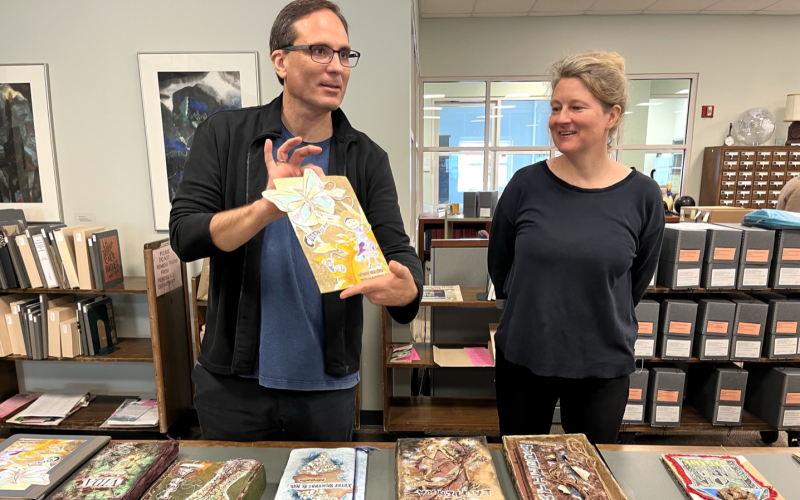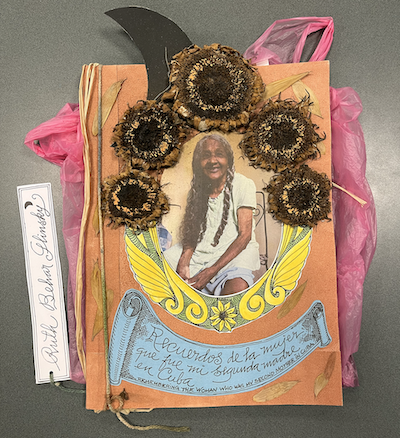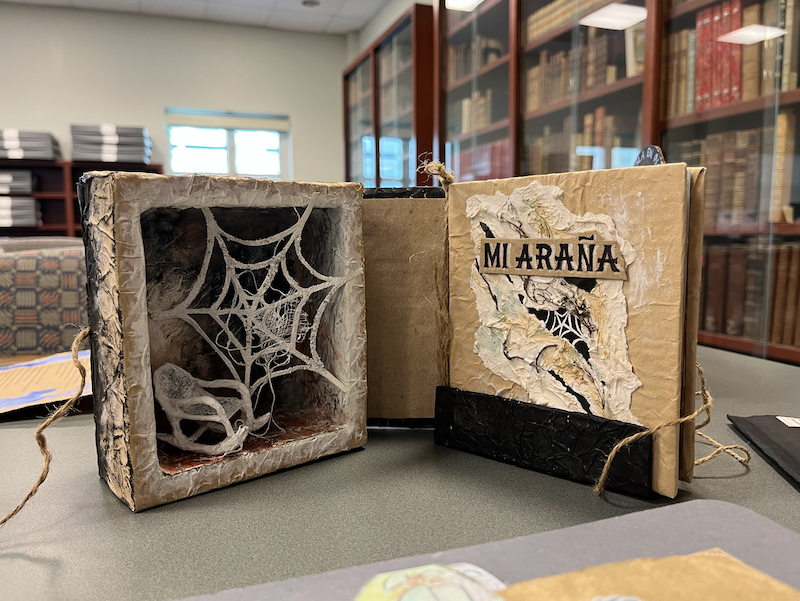Collection of Handmade Books from Latin America, the Caribbean Provides Tactile Learning Experience

By Bethany Bump
ALBANY, N.Y. (Dec. 5, 2023) — In 2005, Jesús Alonso-Regalado was traveling through Mexico when he began collecting a type of book known as libros-arte — handmade art books that utilize innovative papermaking processes and found objects such as fabric, flowers, sand and other materials to tell a story.
Among these are cartonera books, made of cardboard and painted in vivid colors. Cartoneras got their start in Argentina in the early 20th century, when an economic crisis forced small independent publishers to become creative and utilize affordable materials such as recyclable cardboard. Today, they are sold by over 500 publishers worldwide, including in the U.S., but remain especially popular in Latin America.
As publishing has increasingly shifted to mass production and digital realms, Alonso-Regalado, subject librarian for the University Libraries and Departments of Languages, Literatures & Cultures and Latin American, Caribbean & U.S. Latino Studies at UAlbany, wanted to give students a more tactile experience and provide visibility to the diversity of handmade books published in these regions.
Working in collaboration with the Libraries, his respective departments and the M.E. Grenander Department of Special Collections & Archives, he helped organize a Libros/Arte exhibition showcasing over 80 of the books at the University Art Museum this fall. In addition, over 200 of the books are now permanently on display in the Archives, located on the third floor of the Science Library, and available for learning, teaching and research.
“In this world where everything is getting so much more digital, I wanted to bring students back to the library to kind of open their senses,” he said. “They feel very connected to these books and very human because they can touch them, they can physically interact with these materials. And that kind of feeling was getting more and more lost as we are always dealing with our phones.”
Alonso-Regalado found many of the books at the Guadalajara International Book Fair in Mexico, the largest Spanish-language book fair in Latin America, as well as from publishers in Cuba. His collection also includes books from Brazil, Argentina, Puerto Rico and Peru. A dozen of them are the only copy in the world.
His collection, which explores themes of resistance and social movements through text, poetry and art, have inspired a number of academic and creative projects for both students and teachers alike.
In September, New York Public Library librarian Paloma Celis Carbajal visited the University Art Museum to host workshops where students, faculty and other members of the campus and Albany communities made their own cartonera books. UAlbany graduate students wrote the contents of the books in both Spanish and English.
In October, Alonso-Regalado and Ilka Kressner, associate professor of Spanish and chair of the Department of Languages, Literatures and Cultures, led a tour of the collection with several dozen teachers from around the state, including UAlbany in the High School teachers, who were inspired to create lesson plans in their classrooms around the books.
“It’s a bookmaking invitation,” Kressner said. “Teachers and their learners can use different materials to build and make their own books.”
Teresita Barcia, a Spanish teacher in the Bethlehem Central School District, participated in the tour and saw plenty of interdisciplinary possibilities as she thumbed through the pages of the books.
“You could have art teachers, language teachers, even social studies teachers collaborating to come up with a bookmaking project,” she said. “You could create something for the school library and start your own mini collection of books.”
Barcia also saw opportunities to appeal to different kinds of learners.
“You have your visual learners and your auditory learners, and most of the traditional instruction is geared to students like that,” she said. “But then you have your kinesthetic learners, which are the tactile kids, and there’s a lot here for them with finding materials, making their own paper, drawing and designing covers.”
The collection of libros-arte is open to the public and available to view in person at the M.E. Grenander Department of Special Collections & Archives (Science Library 350), Monday through Friday from 9 a.m. to 5 p.m. Appointments are encouraged but not required. There is also a visual catalog of the book covers, with information about each book, available on the University Libraries website.






